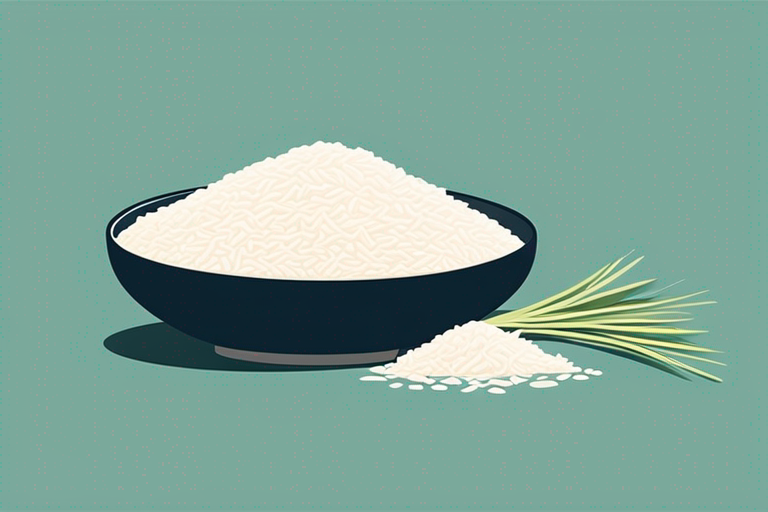
Reviving Stale Basmati Rice: Tips for Making it Edible Again
Reviving Stale Basmati Rice: Tips for Making it Edible Again
In the culinary world, Basmati rice is renowned for its fragrant aroma and delicate texture. However, even the best quality rice can become stale if not stored properly. If you've found yourself with a batch of stale Basmati rice, fear not! With a few simple tricks, you can revive it and make it edible again. (Basmati rice)
Understanding Stale Basmati Rice
Stale rice is a common issue that many home cooks encounter. When Basmati rice is exposed to air and moisture for an extended period, it can lose its freshness and flavor. Stale rice may become dry, hard, or clumpy, making it unappetizing to eat. However, with the right techniques, you can breathe new life into your stale Basmati rice.
Signs of Stale Basmati Rice
- Dry and hard texture
- Loss of aroma
- Clumpy or lumpy appearance
Reviving Stale Basmati Rice: Tips and Tricks
1. Moisture Revival Method
- Place the stale Basmati rice in a microwave-safe bowl.
- Sprinkle a few drops of water over the rice.
- Cover the bowl with a damp paper towel and microwave on low heat for 1-2 minutes.
- Fluff the rice with a fork and check the texture. Repeat the process if needed.
2. Steam Revival Method
- Place the stale Basmati rice in a heatproof bowl.
- Boil water in a pot and place a steamer basket over it.
- Cover the bowl with a lid and steam the rice for 5-10 minutes.
- Fluff the rice with a fork and check the texture.
3. Reheating and Fluffing
- Transfer the stale Basmati rice to a non-stick pan.
- Add a splash of water or broth to the rice.
- Cover the pan and reheat the rice on low heat, stirring occasionally.
- Fluff the rice with a fork to break up any clumps.
4. Seasoning and Flavoring
- Add fresh herbs, spices, or a drizzle of olive oil to the revived Basmati rice for added flavor.
- Mix in sautéed vegetables or protein for a complete meal.
Safety Tips for Handling Stale Basmati Rice
- Check for Mold: Before attempting to revive stale Basmati rice, inspect it for any signs of mold or off-putting odors. If the rice appears moldy or smells rancid, discard it immediately.
- Proper Storage: To prevent rice from going stale, store it in an airtight container in a cool, dry place away from direct sunlight and moisture.
- Refrigeration: If you plan to store cooked Basmati rice for an extended period, refrigerate it within 2 hours of cooking to prevent bacterial growth.
Conclusion
Reviving stale Basmati rice is possible with a few simple techniques and a bit of creativity in the kitchen. By following the tips outlined in this guide, you can salvage your stale rice and enjoy it once again. Remember to prioritize food safety and quality when handling and storing rice to ensure a delicious and satisfying meal every time. With these tricks up your sleeve, you'll never have to waste a batch of Basmati rice again. Happy cooking!
[basmati rice](/food/basmati rice) (Basmati rice)

Authoritative Food Safety References
These agencies and university labs inform every tip and health precaution we publish.
USDA FoodKeeper – Cold Storage Guidelines
Official refrigerator, freezer, and pantry timelines maintained by the U.S. Department of Agriculture.
Visit USDA FoodKeeperFDA Produce Safety Rule & Grower Guidance
Field-to-fridge handling practices that prevent contamination of fruits, vegetables, and leafy greens.
Visit FDA Produce SafetyCDC Foodborne Illness Prevention Hub
Surveillance-backed guidance on pathogens, symptoms, and steps to reduce foodborne illness risk.
Visit CDC Food SafetyUC Davis Postharvest Technology Center
University research detailing optimal storage atmospheres for produce after harvest.
Visit UC Davis PostharvestPenn State Extension – Home Food Preservation & Safety
Peer-reviewed extension bulletins on safe canning, chilling, and reheating practices.
Visit Penn State ExtensionCan I use a rice cooker to revive stale Basmati rice?
How do I prevent Basmati rice from becoming stale?
Can I freeze Basmati rice to prevent it from becoming stale?
Is it safe to eat revived Basmati rice?
Scan your food directly and get instant safety info using our AI-powered camera feature.